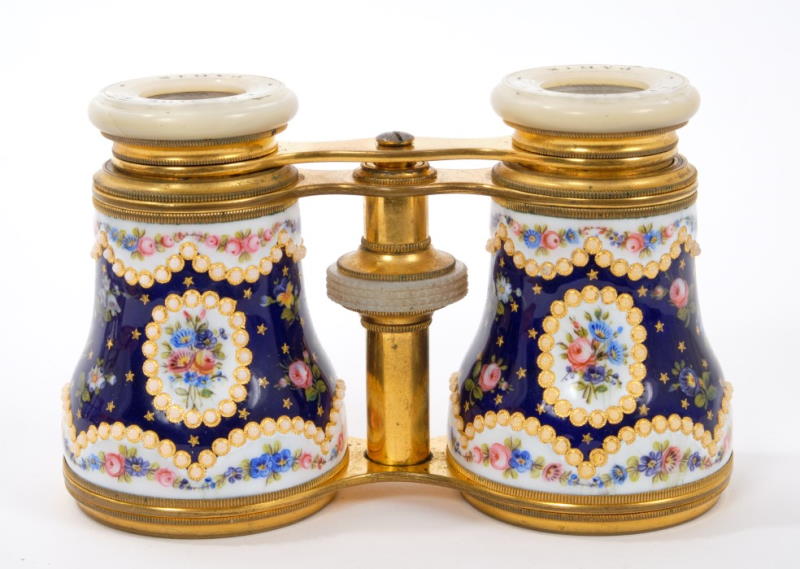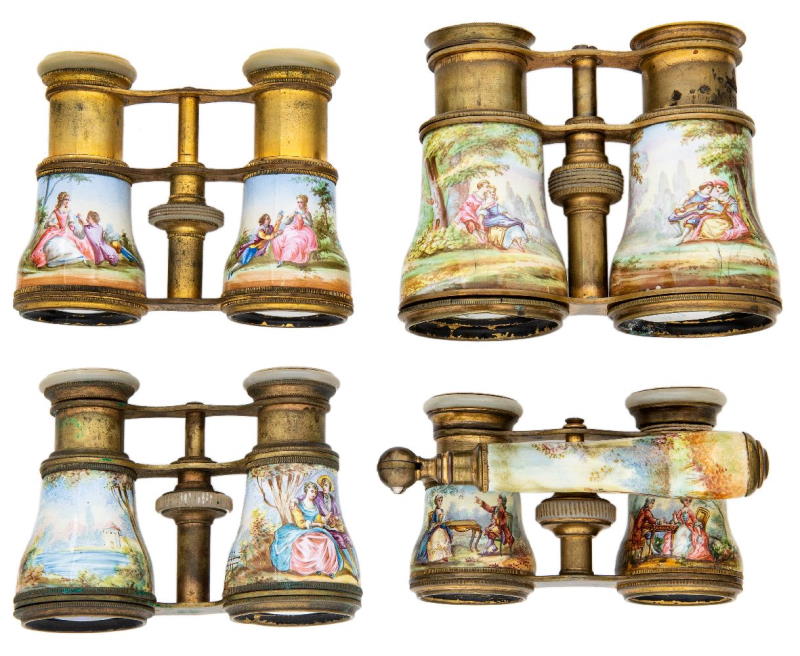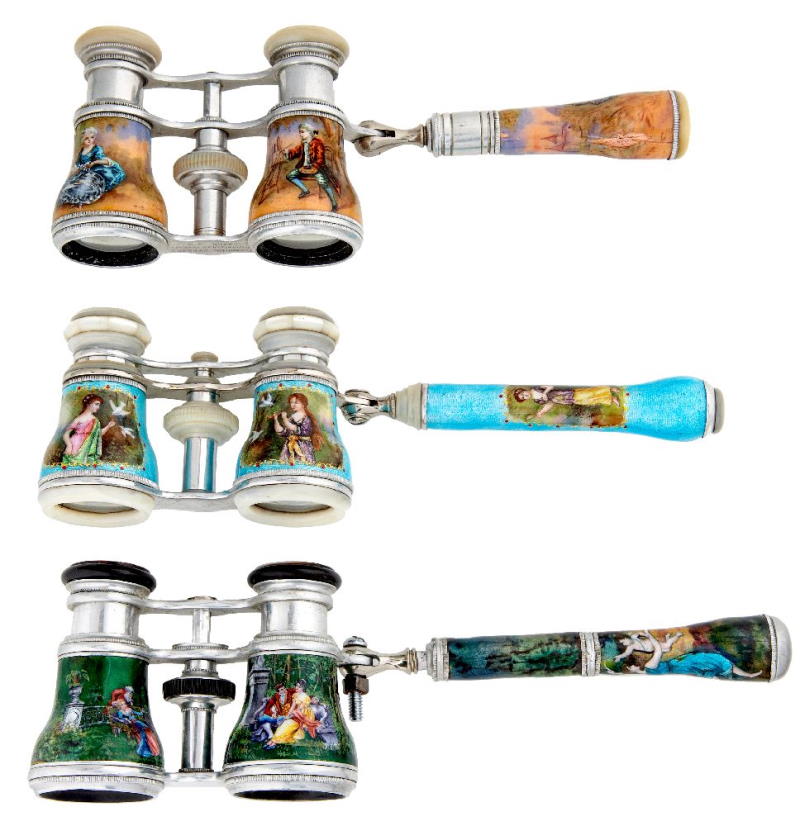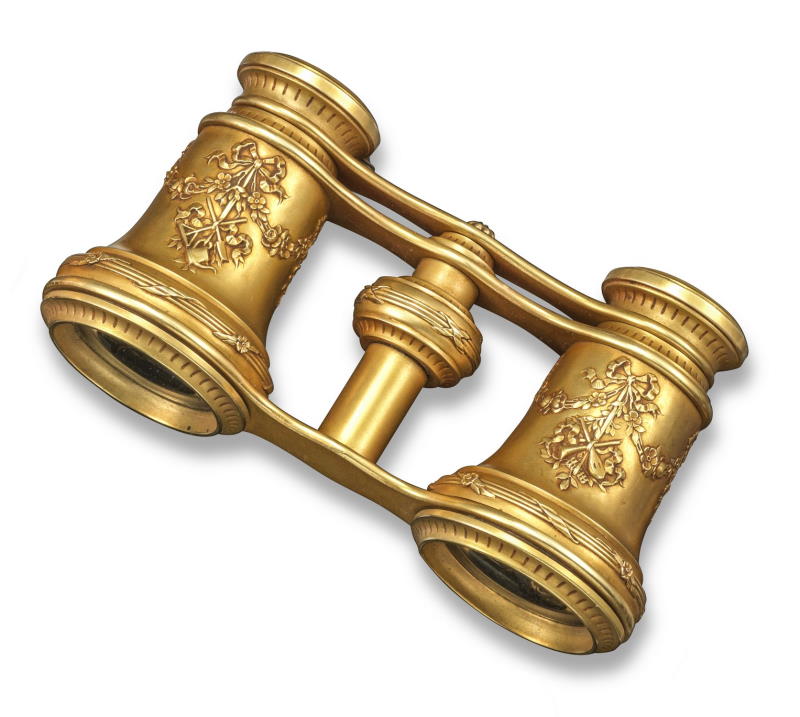There’s something about opera glasses that just captures our imaginations. Maybe it’s the way they conjure up images of elegant ladies and dashing gentlemen attending the opera in centuries past. Or maybe it’s their delicate beauty, with their intricate designs and colorful enameling. Whatever it is, there’s no doubt that opera glasses are a fascinating collectible item. In our introduction to collecting antique opera glasses we take a look at some of the wonderful enamel, mother of pearl and hand painted opera glass designs along with some realised auction prices.

Opera glasses are small binoculars that were once used by theatregoers to get a better view of the stage. They were compact and allowed low level magnification so the viewer could see the details of an actors face or other aspects of the stage performance more clearly.
A Short History of Opera Glasses
Forms of opera glasses have been around for centuries, and their history is as rich and fascinating as the glasses themselves. Opera glasses were first used in France in the early 1700s, when they were known as “lorgnettes.” These early opera glasses were simply two lenses mounted on a handle, which was held up to the eye in order to magnify the stage.

The style opera glasses that became the main designs of the 19th century developed from binoculars being developed in Holland in the early 17th century and Galileo’s telescope shortly after. In fact opera glasses are Galilean binoculars with a central focusing system. Although glasses for viewing were being used for some time they were not actually referenced as opera glasses until the mid-18th century and these simple small telescopic monoculars or spyglasses. In 1823 the first binocular opera glasses appeared. They were simply two telescopes, each requiring independent focusing, affixed together with a bridge. A short time after a center focus wheel was developed, allowing the focusing of both telescopes simultaneously.
Who Invented Opera Glasses?
Jacques LeMaire is credited with the invention of the opera glass, and his design had a profound impact on the development of this popular collectors item. Prior to LeMaires design, opera glasses were little more than simple refracting lenses mounted in metal frames. LeMaire, an accomplished optician, created a sophisticated system of double convex lenses that allowed for much greater magnification. His design quickly became the standard for opera glasses, and it remains the basis for most modern designs. Today, antique opera glasses are highly sought-after by collectors, and LeMaires name is still associated with quality and craftsmanship.

Styles of Opera Glasses
Once there was a standard format, they became very popular and an essential item for the theatregoer. They began to develop in a variety of different and elaborate styles, and a number of manufacturers began making them with the majority of the most elaborate designs being made in Paris such as LeMaire and in the early 20th century Cartier. Most opera glasses had a metal bridge and frame often of gilt brass, and sometimes silver or gold.

With the body being the focus of design being worked on by enamellers, goldsmiths, painters and decorators. Opera glasses became the must have fashion accessory of the late 19th century.
Related
A Lemaire Opera Glasses Price Guide





